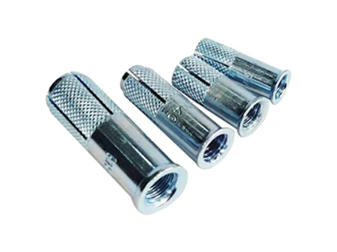Nov . 10, 2024 09:55 Back to list
Understanding the Applications and Benefits of Chemical Bolt Anchors in Construction Projects
Understanding Chemical Bolt Anchors Applications, Advantages, and Installation
Chemical bolt anchors are an essential component in construction and civil engineering, revolutionizing how structures are anchored to concrete, masonry, and other substrates. These anchors consist of bolts or rods combined with chemical adhesives, providing a robust solution for securing heavy loads in various applications. This article delves into the details of chemical bolt anchors, exploring their applications, advantages, and installation processes.
What Are Chemical Bolt Anchors?
Chemical bolt anchors are fasteners that utilize a resin-based adhesive to bond the anchor to the substrate. Typically, they consist of a threaded rod or bolt, a cartridge of resin, and a hardener. When installed, the resin is injected into a pre-drilled hole, and the anchor is placed into the hole. The chemical reaction between the resin and the hardener creates a strong bond that can withstand significant loads.
Applications of Chemical Bolt Anchors
Chemical bolt anchors are widely used in various construction applications, including
1. Concrete Structures They are ideal for attaching fixtures and heavy equipment to concrete surfaces. This includes HVAC systems, signage, and structural components like beams and columns.
2. Masonry In masonry applications, chemical anchors provide dependable anchoring solutions for shelves, racks, and other installations, ensuring stability and security.
3. Bridge and Highway Construction These anchors are critical in securing elements of bridge structures and highway barriers, where safety and strength are paramount.
4. Renovation Projects Chemical anchors are particularly beneficial in renovation work where existing structures may not have the capacity to support new loads without additional support.
5. Heavy Machinery and Equipment In industrial settings, chemical bolt anchors secure heavy machinery, ensuring stability during operation.
Advantages of Chemical Bolt Anchors
Chemical bolt anchors offer several benefits over mechanical anchors or expansion anchors
1. High Load Capacity The chemical bond created by the resin can support much higher loads than conventional anchoring methods, making them suitable for demanding applications.
chemical bolt anchor

2. Versatility They can be used in various environments and materials, including wet conditions or in cracked concrete where traditional anchors might fail.
3. Reduced Damage Since they do not rely on expansion to create a hold, there is minimal risk of cracking or damaging the surrounding material, especially in brittle substrates.
4. Chemical Resistance Many chemical anchors are designed to withstand harsh environmental conditions, making them suitable for outdoor applications or areas exposed to chemicals.
5. Ease of Use The installation of chemical bolt anchors generally requires fewer tools than other anchoring methods, which can save time and labor costs.
Installation Process
Installing chemical bolt anchors involves several steps to ensure a strong and secure bond
1. Preparation The installation site and materials should be assessed. Proper surface preparation, including cleaning the hole of dust and debris, is crucial for optimal bonding.
2. Drilling A hole is drilled into the substrate using the appropriate size bit for the anchor being used. The depth and diameter must match the specifications of the anchor.
3. Injection of Resin The resin is injected into the hole, usually from a cartridge. This process should follow the manufacturer’s guidelines to ensure an even distribution of the adhesive.
4. Insertion of the Anchor The anchor or bolt is then inserted into the resin-filled hole. It’s essential to twist and turn the anchor to ensure that it is properly coated and settles into the adhesive.
5. Curing The anchor is left to cure as per the manufacturer's instructions. Curing times vary, but it generally takes a few hours to a day, depending on the type of resin used.
6. Load Testing After curing, it is advisable to conduct load testing to ensure the anchor has set correctly and can handle the anticipated loads.
Conclusion
Chemical bolt anchors offer a reliable and effective solution for anchoring heavy loads in concrete and masonry applications. Their high load capacities, versatility, and ease of installation make them a popular choice in modern construction practices. Understanding how to correctly install and utilize these anchors can significantly enhance the security and longevity of any structure. As advancements in materials continue, chemical bolt anchors are likely to remain a staple in the industry, meeting the evolving needs of construction and engineering projects worldwide.


